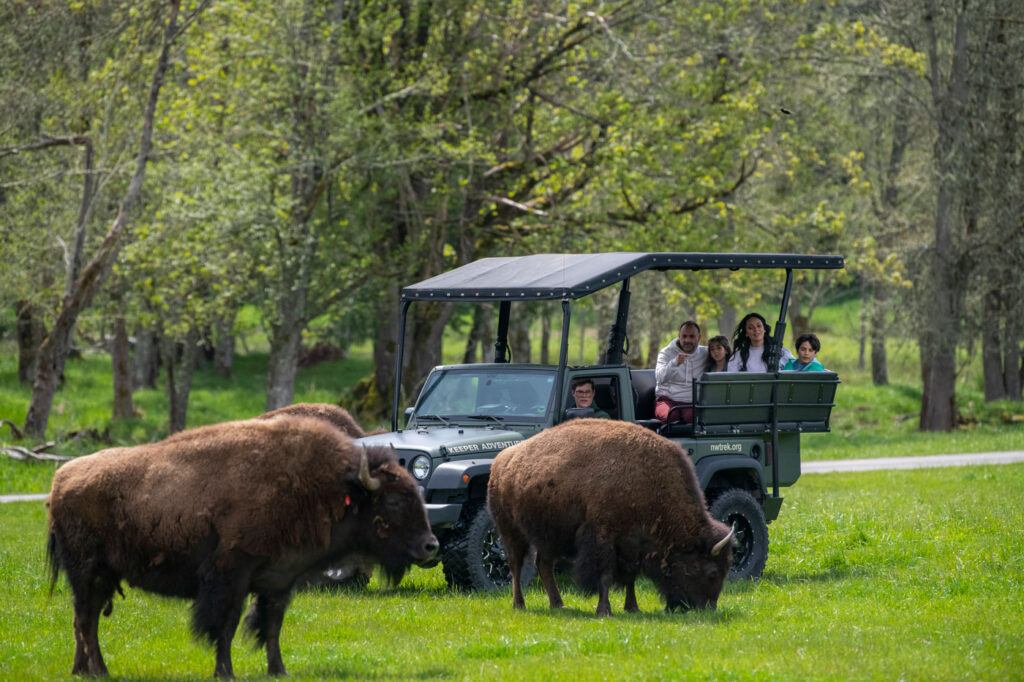Brrr! You can feel the chill in the air as the temperature drops. You’re likely pulling out your winter coats, if you haven’t already! Many of the animals at the wildlife park also have their winter coats ready and are well-prepared for the colder weather.
Wolverines
Wolverines are made for the cold- and our wolverines Rainier and Ahma are no exception. Wolverines are well-adapted for winter living, with extremely dense fur, large snowshoe-like paws that allow them to stay on top of deep snow and crampon-like claws that enable them to climb up and over steep cliffs and snow-covered peaks. Their thick black and gold fur literally sheds frost and protects them from low temperatures. In the wild, they even build snow dens to raise their young.
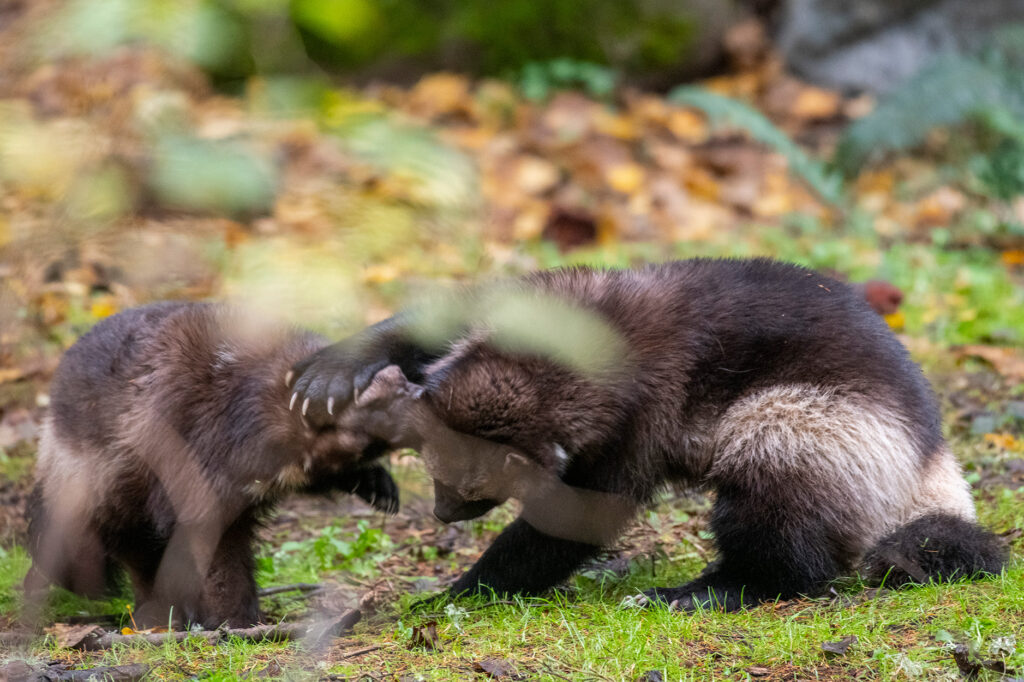
Gray Wolves
If you notice the gray wolves looking extra fluffy, it’s because they are! Wolves begin to grow a second layer of fur in the fall. By the time winter rolls around, they have a dense outer fur and shorter underfur. Their longest fur is usually on the back by the shoulders, referred to as a “cape.” It’s said that wolves’ coats keep them so warm and they lose practically no body heat, that snow won’t even melt on them. At night, wolves often will curl up together to keep warm.
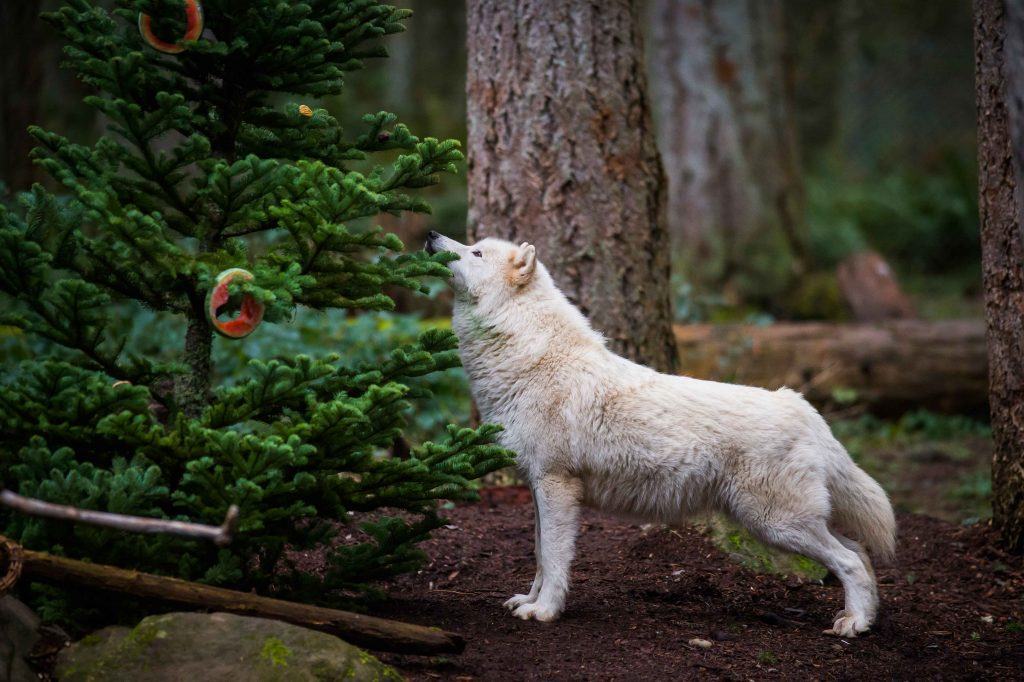
Animals in the Free-Roaming Area
Bison, mountain goats and bighorn sheep also grow a winter coat of thick, lush underfur to protect them from the elements.
Not only does a bison grow that extra fur, their skin also thickens in response to cold temperatures. They develop a layer of fat for added insulation. In the wild, bison can use their massive head, neck and shoulders as snow plows to find food deep in the snow. Fortunately for the bison at Northwest Trek, they are given their food daily and don’t have to do that extra work for food.
Like bison, mountain goats and bighorn sheep have two layers of fur during the winter. The base, insulation layer close to their bodies is soft while the second layer, called guard hairs, covers the woolly fur. For both animals in the wild, the extra fur helps them blend in with snow and hide from predators during the winter months.
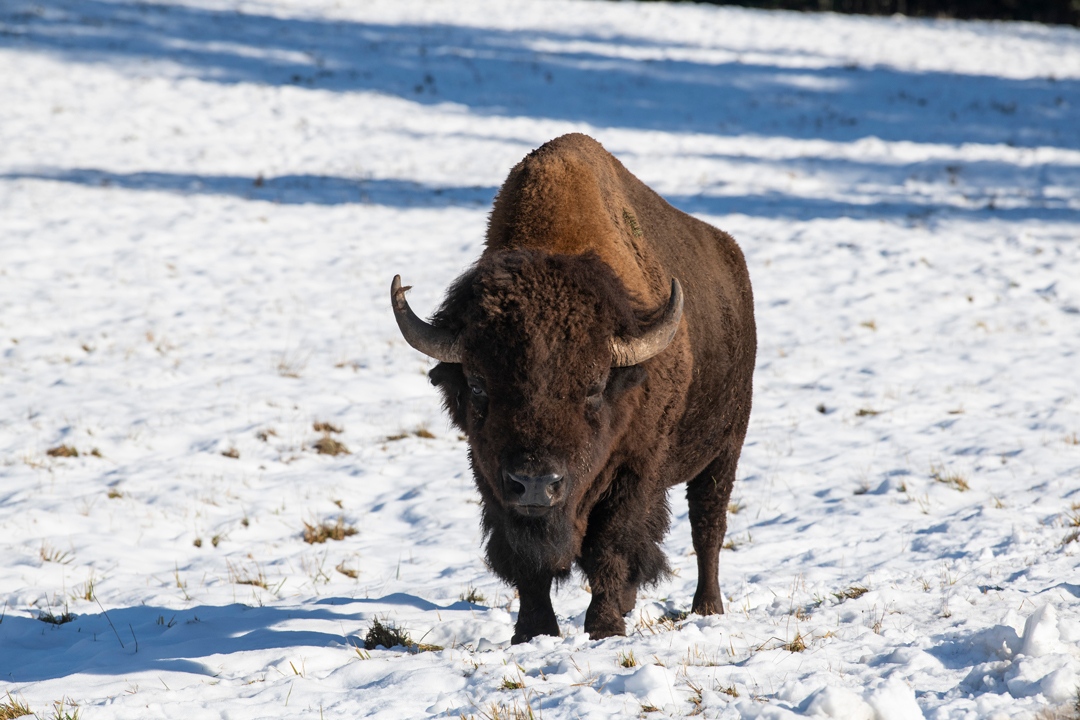
Black Bears
Bears in the wild have a natural instinct to hibernate during the winter when food is scarce. The black bears at the park go into something called “torpor”. During torpor, a bear’s body temperature, respiratory rate and metabolic rates all decrease to conserve energy. The bears do find other ways to stay warm while they’re taking their long naps though. Benton and Fern prep their den in the exhibit with ferns, fir boughs and grasses for bedding. Once comfortably inside, the bears will pull down even more vegetation toward the opening to keep it warm and dry. Vegetation as a winter coat!
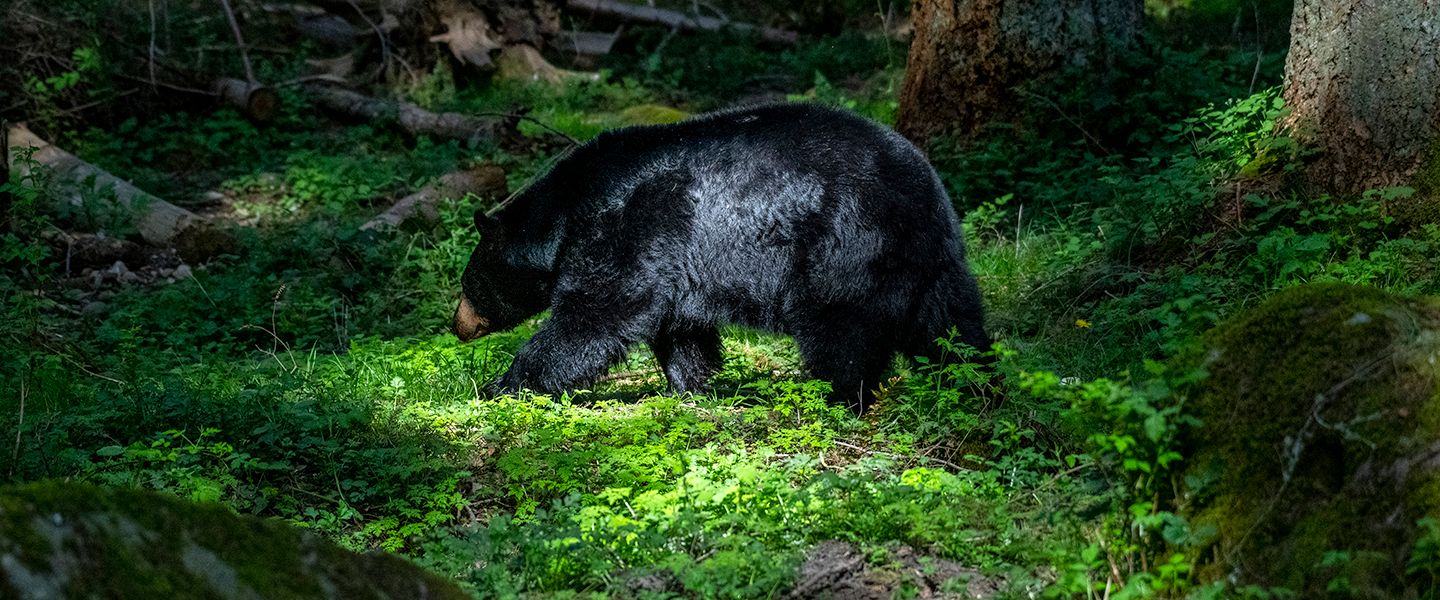
Come visit!
No matter the time of year, it’s always a great day to visit Northwest Trek Wildlife Park! Grab your coat, get a hot chocolate at the Forest Café, roam around our paths (walking warms you up!) and take a Wild Drive or Keeper Adventure Tour to see the many animals in our Free-Roaming Area.
